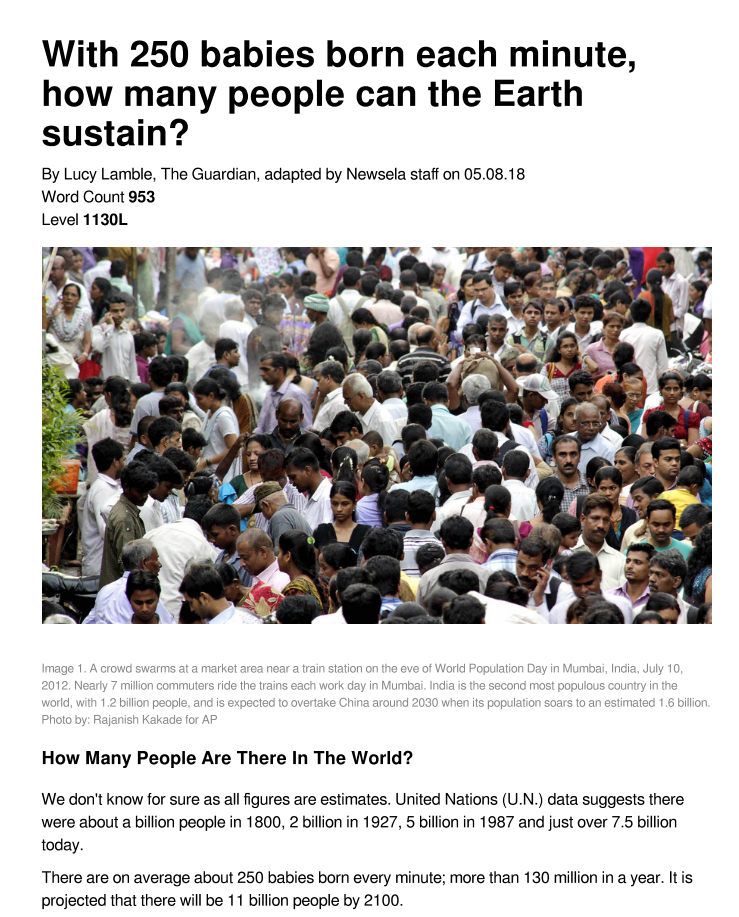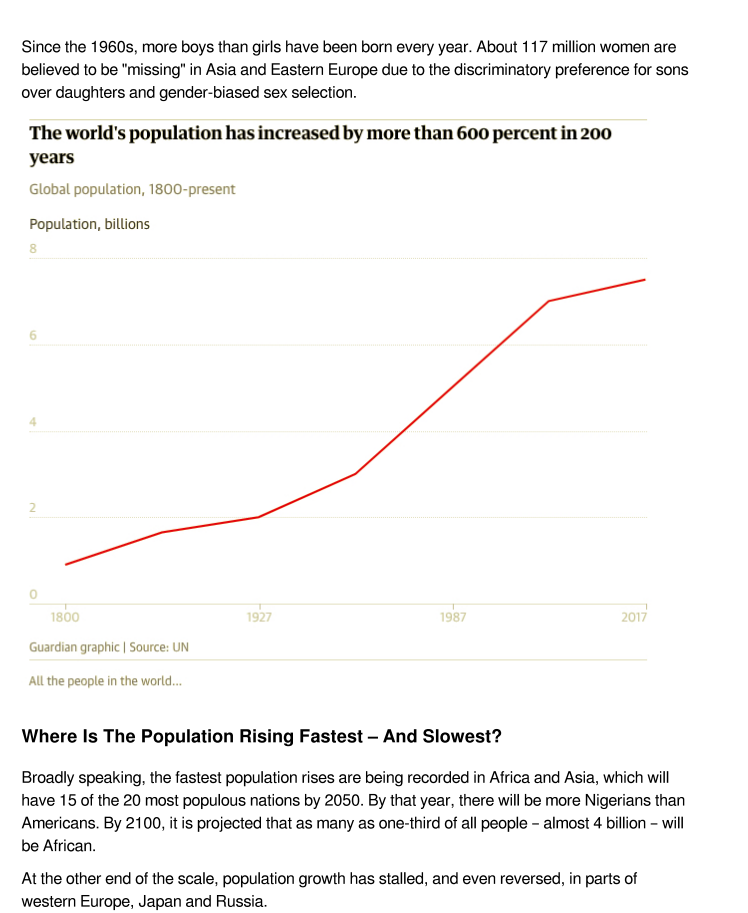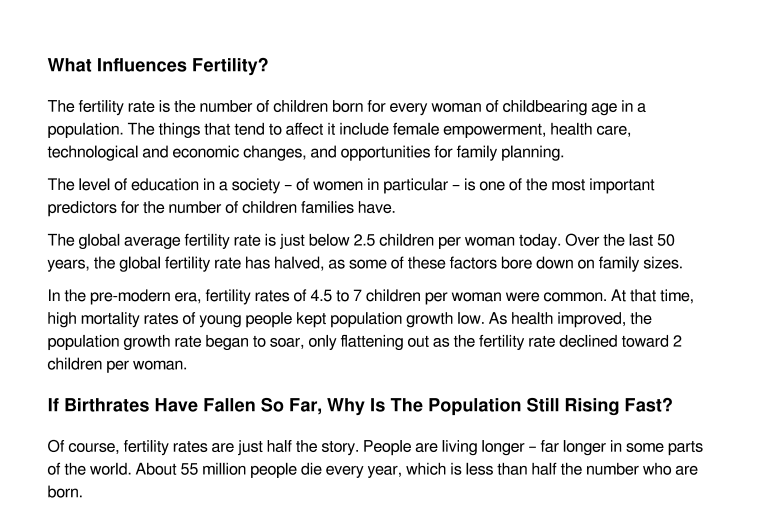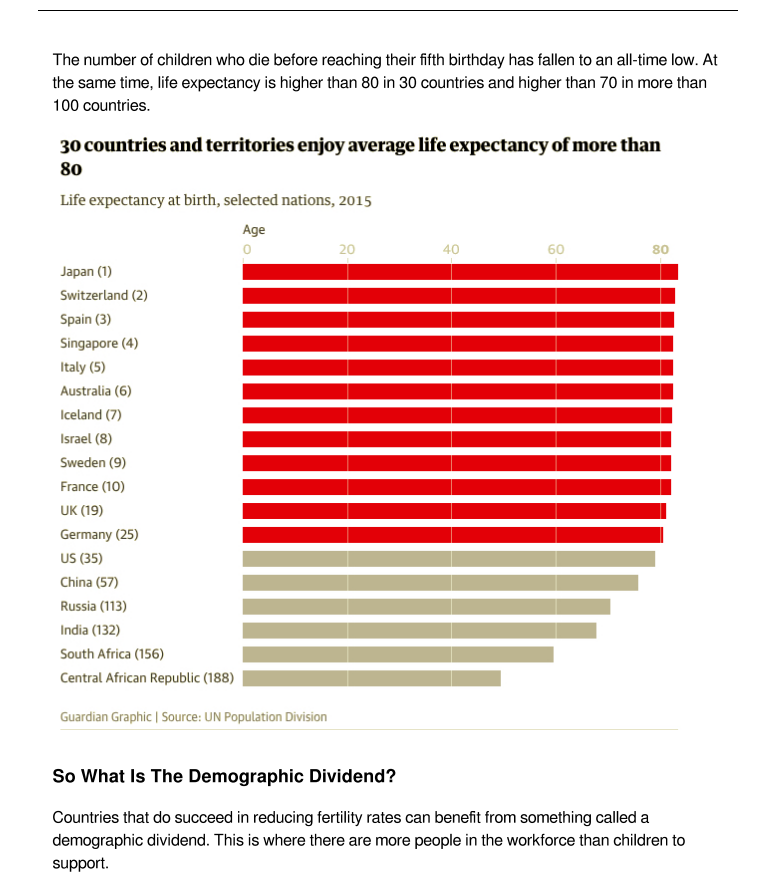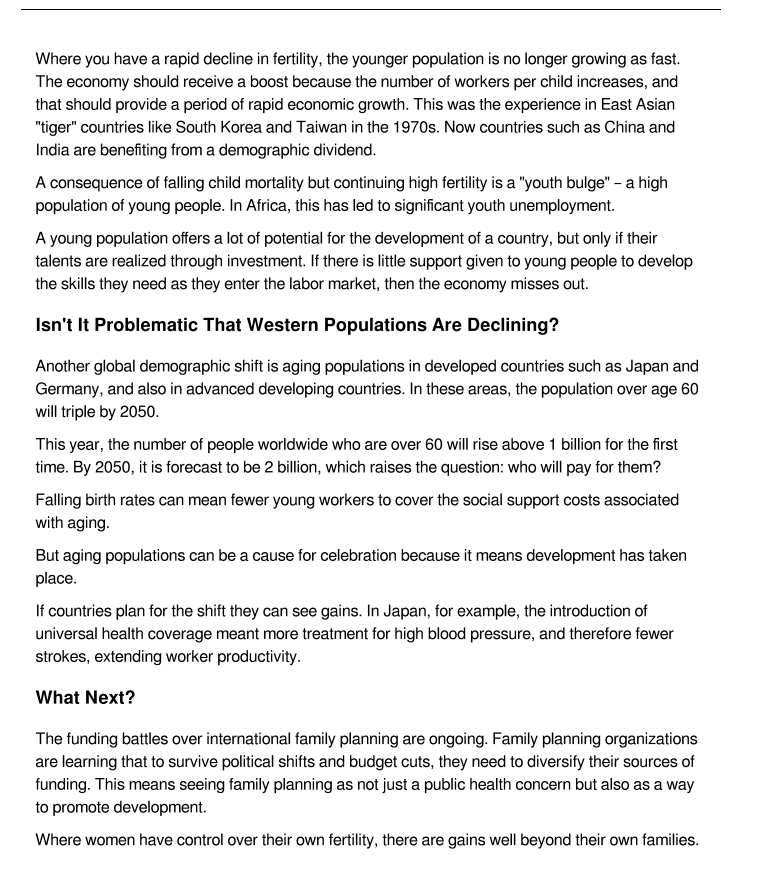Answered step by step
Verified Expert Solution
Question
1 Approved Answer
i. Look at the picture showing global population growth. Use a ratio to compare the population in 1800 to 1987. ii. Using a ratio compare
i. Look at the picture showing global population growth. Use a ratio to compare the population in 1800 to 1987. ii. Using a ratio compare the populations on any 2 countries as expected in the year 2050 (see the blue barchart). iii. What are the reasons for the countries that have very high population growth? iv. Using ratios, compare the average life expectency of the longest living and the shortest expected lifespan v. List 2 problems for a country that has a FALLING birth rateWith 250 babies born each minute, how many people can the Earth sustain? By Lucy Lamble, The Guardian, adapted by Newsela staff on 05.08.18 Word Count 953 Level 1130L Image 1. A crowd swarms at a market area near a train station on the eve of World Population Day in Mumbai, India, July 10, 2012. Nearly 7 million commuters ride the trains each work day in Mumbai, India is the second most populous country in the world, with 1.2 billion people, and is expected to overtake China around 2030 when its population soars to an estimated 1.6 billion. Photo by: Rajanish Kakade for AP How Many People Are There In The World? We don't know for sure as all figures are estimates. United Nations (U.N.) data suggests there were about a billion people in 1800, 2 billion in 1927, 5 billion in 1987 and just over 7.5 billion today. There are on average about 250 babies born every minute; more than 130 million in a year. It is projected that there will be 11 billion people by 2100. Since the 1960s, more boys than girls have been born every year. About 117 million women are believed to be "missing" in Asia and Eastern Europe due to the discriminatory preference for sons over daughters and gender-biased sex selection. The world's population has increased by more than 600 percent in 200 years Global population, 1800-present Population, billions 8 6 1800 1927 1987 2017 Guardian graphic Source: UN All the people in the world... Where Is The Population Rising Fastest - And Slowest? Broadly speaking, the fastest population rises are being recorded in Africa and Asia, which will have 15 of the 20 most populous nations by 2050. By that year, there will be more Nigerians than Americans. By 2100, it is projected that as many as one-third of all people - almost 4 billion - will be African At the other end of the scale, population growth has stalled, and even reversed, in parts of western Europe, Japan and Russia. Are These Numbers Sustainable? World's most populous nations, 2050 Forecast population, in millions, median variant 500 1,000 1,500 This India China Nigeria US Indonesia Pakistan Brazil Bangladesh DR Congo Ethiopia Mexico Egypt Philippines Tanzania Russia Vietnam Japan Uganda Turkey Kenya Iran Guardian graphic Source: UN population division is a difficult question to answer. Population experts like Paul Ehrlich argue that the population of the world has long since surpassed optimal levels, though critics counter that consumption is as important as population levels. Some believe the very argument about overpopulation is controversial. That's because it tends to point the finger at poorer parts of the world with large growth rates and not at richer regions that use disproportionately more resources. What Influences Fertility? The fertility rate is the number of children born for every woman of childbearing age in a population. The things that tend to affect it include female empowerment, health care, technological and economic changes, and opportunities for family planning. The level of education in a society - of women in particular - is one of the most important predictors for the number of children families have. The global average fertility rate is just below 2.5 children per woman today. Over the last 50 years, the global fertility rate has halved, as some of these factors bore down on family sizes. In the pre-modern era, fertility rates of 4.5 to 7 children per woman were common. At that time, high mortality rates of young people kept population growth low. As health improved, the population growth rate began to soar, only flattening out as the fertility rate declined toward 2 children per woman. If Birthrates Have Fallen So Far, Why Is The Population Still Rising Fast? Of course, fertility rates are just half the story. People are living longer - far longer in some parts of the world. About 55 million people die every year, which is less than half the number who are born. The number of children who die before reaching their fifth birthday has fallen to an all-time low. At the same time, life expectancy is higher than 80 in 30 countries and higher than 70 in more than 100 countries. 80 30 countries and territories enjoy average life expectancy of more than 80 Life expectancy at birth, selected nations, 2015 Age 0 20 40 60 Japan (1) Switzerland (2) Spain (3) Singapore (4) Italy (5) Australia (6) Iceland (7) Israel (8) Sweden (9) France (10) UK (19) Germany (25) US (35) China (57) Russia (113) India (132) South Africa (156) Central African Republic (188) Guardian Graphic Source: UN Population Division So What Is The Demographic Dividend? Countries that do succeed in reducing fertility rates can benefit from something called a demographic dividend. This is where there are more people in the workforce than children to support. Where you have a rapid decline in fertility, the younger population is no longer growing as fast. The economy should receive a boost because the number of workers per child increases, and that should provide a period of rapid economic growth. This was the experience in East Asian "tiger" countries like South Korea and Taiwan in the 1970s. Now countries such as China and India are benefiting from a demographic dividend. A consequence of falling child mortality but continuing high fertility is a "youth bulge" - a high population of young people. In Africa, this has led to significant youth unemployment. A young population offers a lot of potential for the development of a country, but only if their talents are realized through investment. If there is little support given to young people to develop the skills they need as they enter the labor market, then the economy misses out. Isn't It Problematic That Western Populations Are Declining? Another global demographic shift is aging populations in developed countries such as Japan and Germany, and also in advanced developing countries. In these areas, the population over age 60 will triple by 2050. This year, the number of people worldwide who are over 60 will rise above 1 billion for the first time. By 2050, it is forecast to be 2 billion, which raises the question: who will pay for them? Falling birth rates can mean fewer young workers to cover the social support costs associated with aging. But aging populations can be a cause for celebration because it means development has taken place. If countries plan for the shift they can see gains. In Japan, for example, the introduction of universal health coverage meant more treatment for high blood pressure, and therefore fewer strokes, extending worker productivity. What Next? The funding battles over international family planning are ongoing. Family planning organizations are learning that to survive political shifts and budget cuts, they need to diversify their sources of funding. This means seeing family planning as not just a public health concern but also as a way to promote development. Where women have control over their own fertility, there are gains well beyond their own families
Step by Step Solution
There are 3 Steps involved in it
Step: 1

Get Instant Access to Expert-Tailored Solutions
See step-by-step solutions with expert insights and AI powered tools for academic success
Step: 2

Step: 3

Ace Your Homework with AI
Get the answers you need in no time with our AI-driven, step-by-step assistance
Get Started


